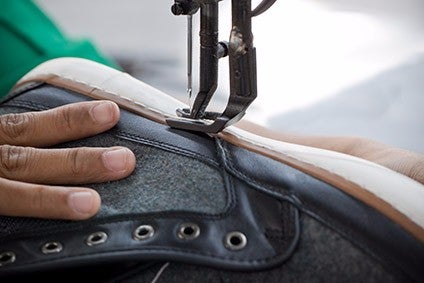
Vietnamese footwear and apparel manufacturers are being urged to invest in labour and updating machinery if they hope to capitalise on the current US-China trade war and increase export orders.
According to the Ministry of Industry and Trade in Vietnam, footwear export turnover rose 10.5% to US$11.7bn for the first nine months of 2018, making Vietnam the third largest exporter of footwear and handbags.
The report, however, warned “productivity constraints” related to manufacturing — particularly as labour costs are increasing — continue to prove problematic.
The MoIT says it is a “disadvantage that needs to be overcome soon”, especially since there is a “high possibility” of orders growing from the ongoing trade spat between China and the US.
Garment exports have also risen in Vietnam during the nine-month period. Textile and garment exports were valued at US$22.56bn in the period, a growth of 17.1% year-on-year.
The Vietnamese Government recently set out its vision for the fourth industrial revolution (4.0). As part of this, it hopes to modernise manufacturing facilities, ultimately meaning a reduction in workforces at a time when labour costs are rising.

US Tariffs are shifting - will you react or anticipate?
Don’t let policy changes catch you off guard. Stay proactive with real-time data and expert analysis.
By GlobalDataLast week, Korean fibre giant Hyosung announced it was rolling out a series of ‘smart factories’ at five of its Spandex factories in China and Vietnam as the company looks to boost product quality and capacity, while preparing its business for the Industry 4.0 era.
Vietnam is the world’s third largest clothing exporter and has benefited as producers and buyers diversify their supply chains, helped by its low labour costs and industry focus on specialisation, modernisation, and increasing value-add.
According to an overview of Vietnam on re:source by just-style, a new online strategic planning tool, it stands to gain from duty-free access to the EU market once the EU-Vietnam free trade agreement comes into force, and is widely expected to be one of the biggest beneficiaries of the Comprehensive and Progressive Pacific Partnership (CPTPP) free trade deal. Increased foreign direct investment – particularly in spinning and weaving – has pushed the country into the world’s top ten textile exporters.



